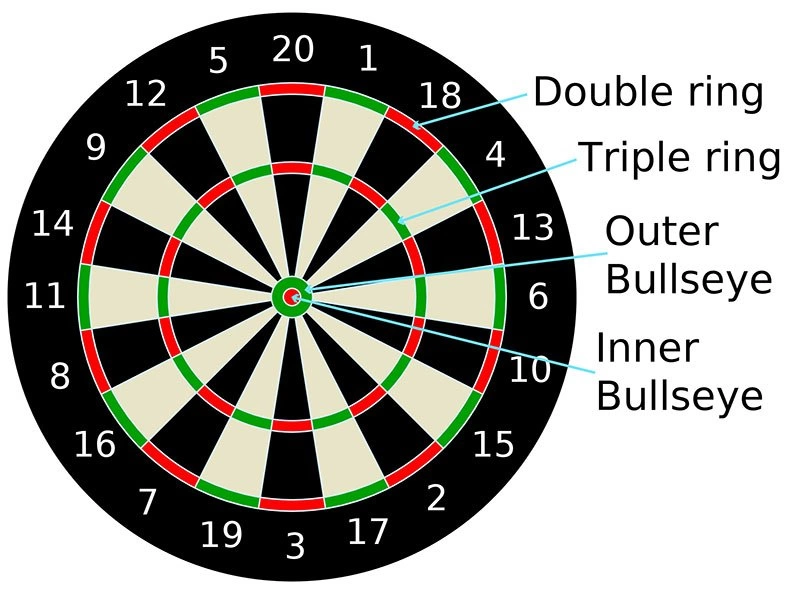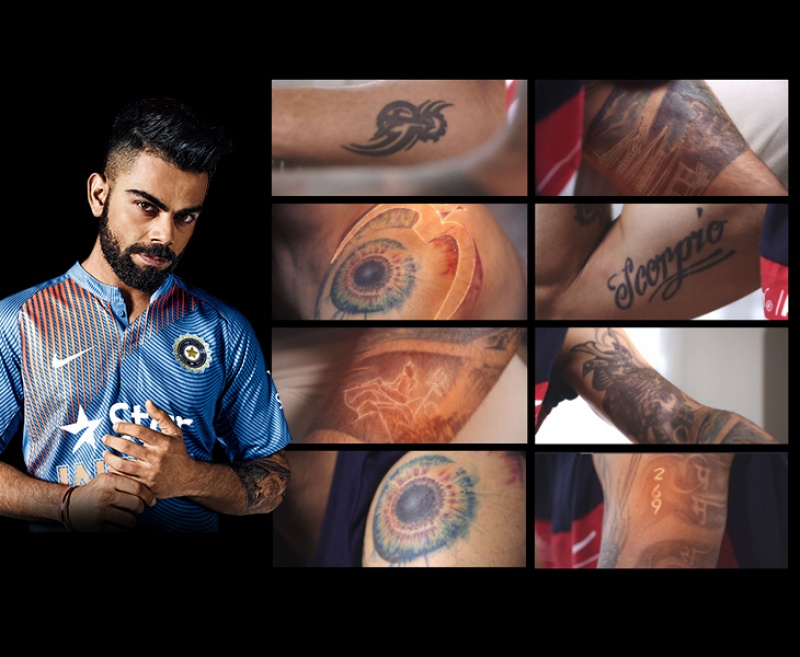
Dart rulesUnlike many traditional pub games, darts have become popular enough to be organized by large governing bodies. Since the game originated in England, it is not surprising that its finest is the British Darts Organization and thus BDO rules have been used as guidelines. When in doubt, the rules played by the locals should always be applied.Please note that one yard = 3 feet = 36 inches = 0.9144 meters.DescriptionBy far, the most popular darts board design today is the "watch" or "treble" board and is the only board to be considered in these instructions. A good board should be made of vegetable fibers and called a "rough hair plate". The style is set on the dashboard with wire and tone. It consists of a circle of 20 pieces, apparently randomized from 1 to 20. In the middle is a small black circle called "target", around which is a thin red ring called 25 rings. The parts of this ring that are broken only by the "triple" ring extend to the middle of the edge and the "weak" ring represents the edge of the circle. So, for example, if a nobility fell on the syllable marked 14 and was inside the treble ring, it would be labeled "Treble 14".Each player has 3 arrows weighing front, bird, weapons a few inches long with a sharp tip. The deck is positioned with a target center of 1.73 m (5 feet. 8 inches) above the ground. Players must stand behind a raised horizontal block called "oche" (pronounced "okky") with a height of 38 mm (1 1/2 inches), although any markings on the ground will work for casual play. The front of the octet must be at a distance of 2.37 m (7 feet, 9 and 1/4 inches) from the front of the plate.501 and 301 gamesMost professional matches "501 up". This is the simplest of games. Each player starts with a score of 501 and takes turns throwing 3 darts. The score for each round is calculated and deducted from the total number of players. Bullseye scores 50, the outer ring scores 25, and the dart in the double or triple loop counts the double or triple syllable points. The goal is to be the first player to drop the score to zero exactly, the only warning is that the last throw throws should land on a double or on a target.If the player drops the score to 1 or falls below zero, the result is bankruptcy, this role ends immediately and the score is returned to what it was at the beginning of that round. For example, if the player has 32 to exit and the first darts are 16, and the second is 15, the player drops, and the score is returned to 32. Therefore, at the last turn, it is not necessary to throw the three arrows: the player can win the first or second turn of the turn.Since a player who misses a double goal is more likely to score the song in this segment, good players try to leave an identifiable number like 24 or more ideally 32 - double 16. So, for example, if a player has twice 16 left, and hit 16, You have 8 left, if you hit 8 then you have 4 left, and so on, this is useful because it is not necessary to throw extra darts to reduce the result to a pair number. .. it often happens that people downgrade their scores to 1 (usually while targeting to multiply 1), some people play an informal rule called "division 11". This rule states that when the score is reduced to 1, instead of falling, the player must "divide 11" by throwing a throw between the two numbers that make up the number 11 at the edge of the board. This is complicatedSome games require doubling to start recording and also to finish the game.When the score is less than 171, professional players know the numbers they need to target to pay in one turn with 3 darts. Here is a table of such groups. Some results have multiple payment options, but in most cases, we only show the best:170 - t20, t20, bull. (Highest possible payment). 167 - s20, s19, bull. 164 - t20, t18, urine (preferably t19, t19, urine because it does not require two darts in bed and the error keeps the even number). 161 - t20. t17, bull. 160 - t20, t20, d20. 158 - t20, t16, toro or t20, t20, d19 157 - t20, t19, d20 156 - t20, t20, 18d 155 - t20, t15, toro, t20, t19, or d19 154 - t20, t18, d20 153 - BC 20, BC 19, D. 18 152- T20, T20, 16D 151 - t20, t17, d20 150 - s20, s18, d18 (bull, bull, bull are preferred unless you feel you are scaring your opponent!)149 - s20, s19, d16 148 - t20, t16, d20 (followed by t18, t18, d20) 147 - t20, t17, d18, t19, t18, d18146 - t20, t18, d16 (followed by t19, t19, d16).For all numbers under 146, there are at least 3 output groups.A popular game that is played for fun is "Around the Hour". In this, each player takes turns throwing 3 darts and must throw one throw in each part starting from 1 to 20 and then ending with 25 and a goal. Players must start with 1 and cannot move to the next number until the darts are successfully thrown into the current target segment. Doubles and triples are ignored. The first player to hit all goals then ends up winning the goal.cricket There are a number of darts games that are based on other pub games and this is the most popular one. Each player takes turns throwing 3 arrows as usual.To start, players throw a coin to determine who hits first. The hit player starts, and during each turn, tries to score the most points possible using the usual 501 scoring system. When a hitting player scores more than 40 points in each tournament, the number of points above 40 is added to that player's points. For example, if a hitting player scores 58, 18 points (points) are added to that player's points. Otherwise, the hitting player does not score anything.The opposing player is considered bowling and this player only targets the target. The shooter gets 2 wickets for the goal and 1 wicket for the 25th episode. Players take turns until the shooter throws a throw that records the 10th wicket. At this point, the turns are reversed and the other player has an "income" (turn on the bat). The game must end when both players play two rounds each, at which point the player with the highest score wins the match.If the hit player must drop a throw on the target or on episode 25, then the hit player loses one or two wickets accordingly. If the archer throws a dart that does not land on the board, 20 "additions" are given for hitting.For less-skilled players, the game can be made easier in several ways. Here are some suggestions:Each entry consists of fewer wakes, for example, 4)The goal of the wicket can be changed to parts 16, 17, 18, 19, and 20. Hitting players score the absolute amount in each round instead of the amount exceeding 40. killerThis is the most popular game for large groups and is very fun. There are differences, but this is the basic game.To start, the order of play is determined, and each player throws a "bad hand" (left-handed players throw the right hand and vice versa) on the board to determine their number. Obviously, if you miss the arrows or hit a number that has already been assigned, the player will try again. Each player (usually 5) is assigned a specified number of lives and generally, a small bet is required in a bowl. It is a good tactic to avoid being near someone else's number.Players take turns starting to target their assigned number, and they record one life for each hit in darts, two lives for a double, and 3 lives for a treble. Once the player has recorded 5 lives, this player becomes a "killer" until someone deducts one or more lives. However, the player must live 5 years to become a killer, if his score is exceeded he is deducted for the amount that has been exceeded. For example, if a player has 4 lives and reaches three times their number, the first three of the goals scored are scored up to 5 but the remaining lives are deducted, so the end result is 3 lives.Once the player becomes a killer, he indicates any of the other player's numbers. Every time they do so, the appropriate number of lives is deducted from the victim's player points. When a player drops below 0, that player is out of the gameAlso Read:






